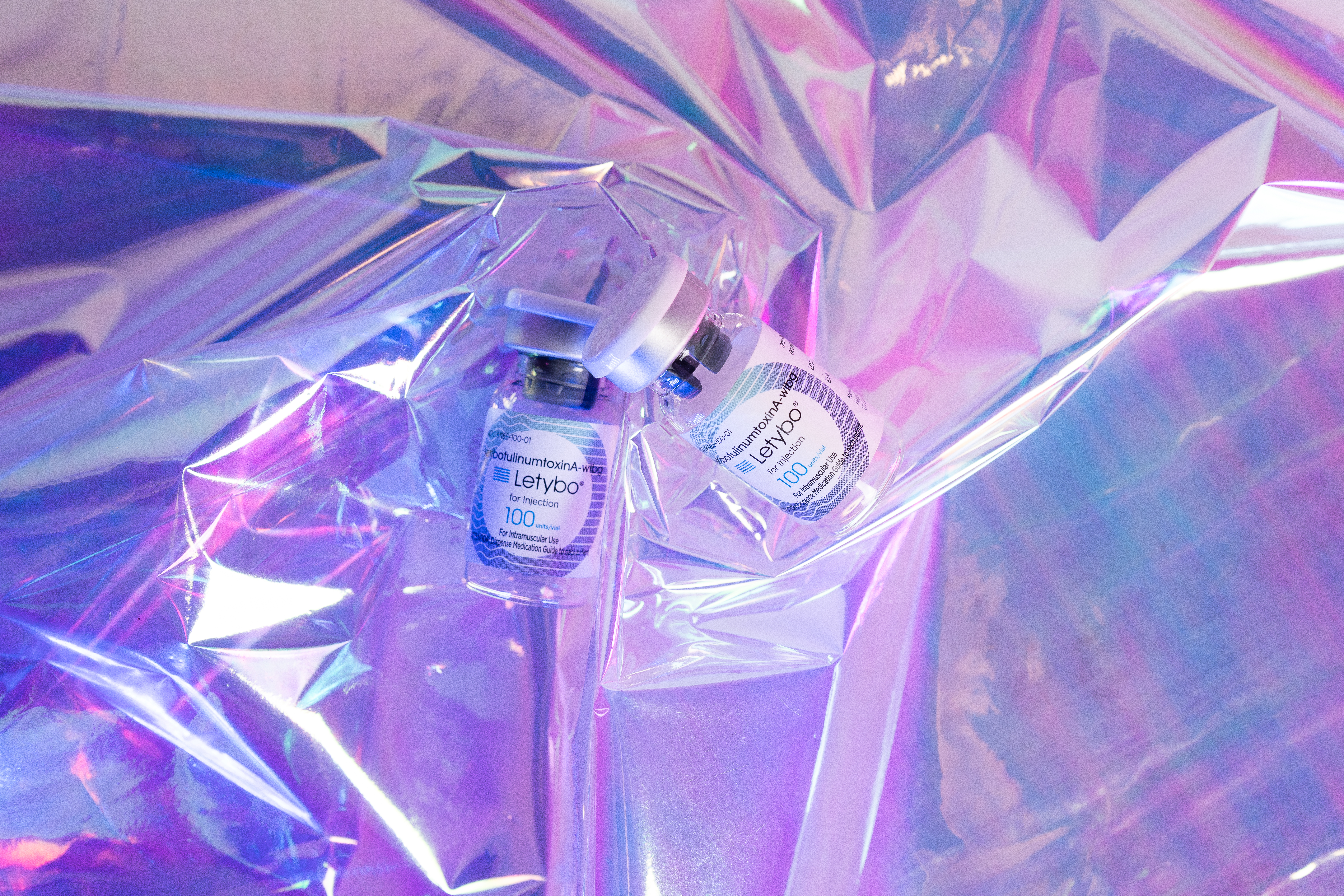If you’re considering Botox Fresno and other neurotoxins like Dysport, Jeuveau, Letybo, or Daxxify, understanding how they work can help you make an informed choice. These treatments temporarily relax muscles to reduce the appearance of wrinkles, offering a non-surgical way to refresh your look.
Neurotoxins target specific facial muscles to smooth lines and create a more youthful appearance with minimal downtime. Each product has slight differences in formulation and effects, but all aim to deliver natural-looking results when administered by a skilled provider.
You might be wondering which option suits your needs best and what to expect during treatment. This guide will clarify the benefits, differences, and practical details about Botox and its alternatives in Fresno.
What Are Neurotoxins?
Neurotoxins used in aesthetics target muscle activity to reduce wrinkles and fine lines. They come in various forms with differences in composition and duration. Understanding how they work and the types available can help you make informed decisions.
Types of Neurotoxins in Aesthetics
The most common neurotoxins you’ll encounter are Botox, Dysport, Jeuveau, Letybo (the new #1 South Korean neurotoxin), and Daxxify. All are derived from botulinum toxin type A but have different formulations and clinical uses.
| Neurotoxin | Key Features | Onset Time | Duration |
|---|---|---|---|
| Botox | Most widely used, FDA-approved for many uses | 3-5 days | 3-4 months |
| Dysport | Spreads more widely, good for larger areas | 2-3 days | 3-4 months |
| Jeuveau | Marketed specifically for aesthetic use | 3-7 days | 3-4 months |
| Letybo | New #1 South Korean neurotoxin, known for high purity and smooth results | 2-4 days | 3-4 months |
| Daxxify | Longest-lasting FDA-approved neurotoxin, peptide technology for extended results | 1-2 days | 6-9 months |
You can expect subtle variation in how quickly effects appear and how long they last. Your provider may recommend one over another based on your treatment goals and treated area.
How Neurotoxins Like Botox Work
Neurotoxins block the release of acetylcholine, a chemical messenger that signals muscles to contract. By preventing this signal, the targeted muscles relax, smoothing overlying skin.
The effect is temporary because your nerves eventually regenerate the ability to signal muscle contractions. This is why treatments need repeating every few months to maintain results.
During treatment, small amounts are injected into specific muscles. This precise targeting minimizes muscle movement without affecting overall facial expressions. You should experience a reduction in dynamic wrinkles—those caused by repeated muscle activity.
Botox in Fresno: Overview and Popularity
Botox and similar neurotoxins have become widely used in Fresno for addressing various cosmetic and medical concerns. Their effectiveness, safety, and accessibility contribute to their increasing demand in the area.
Benefits of Choosing Botox in Fresno
When you opt for Botox in Fresno, you benefit from experienced providers familiar with local patient needs. Many clinics offer personalized treatment plans to ensure natural-looking results tailored to your facial structure.
You also have access to competitive pricing compared to larger metropolitan areas, without sacrificing quality of care. The convenience of scheduling and availability plays a role, making ongoing maintenance easier to manage.
Fresno’s providers often incorporate the latest techniques and products like Dysport, Jeuveau, Letybo, and Daxxify, giving you options depending on your desired results and treatment speed.
Common Treatment Areas
Botox is primarily used to reduce wrinkles and fine lines around the eyes (crow’s feet), forehead, and between the eyebrows (glabellar lines). These areas respond well to neurotoxin injections and show visible improvements after treatment.
Other popular sites include the jawline for muscle relaxation, reducing teeth grinding, and underarms to control excessive sweating (hyperhidrosis). Some patients choose Botox for neck bands or to soften a gummy smile.
Understanding which areas you want treated helps your provider customize the injections for balanced effects that enhance your overall appearance without looking overdone.
Safety and Local Regulations
Botox treatments in Fresno are regulated by California state law, requiring practitioners to be licensed medical professionals such as doctors, nurse practitioners, or physician assistants. This ensures compliance with safety standards.
Clinics must follow strict hygiene protocols and use FDA-approved products. You should verify that your provider maintains proper credentials and handles your treatment in a safe, clinical environment.
Side effects are generally mild, including temporary bruising or swelling. Discuss your medical history with your provider beforehand to minimize risks and get clear post-treatment instructions for the best outcomes.
Comparing Botox, Dysport, Jeuveau, Letybo, and Daxxify
Botox, Dysport, Jeuveau, Letybo, and Daxxify are all neurotoxins used to reduce wrinkles by relaxing muscles. They differ in formulation, onset time, duration, and ideal candidates, which can affect your treatment choice.
Key Differences Between Neurotoxin Brands
Botox was the first FDA-approved neurotoxin and is well-known for its predictable results. Dysport contains smaller protein molecules, which allows it to spread more widely in the treated area.
Jeuveau is marketed primarily for cosmetic use and tends to be priced lower. It has a similar protein structure to Botox but uses a different manufacturing process.
Letybo is a new generation neurotoxin from South Korea, gaining popularity for its high purity and smooth, natural results. Daxxify stands out for its peptide technology, which allows for a much longer duration of effect—up to 6-9 months.
When it comes to dosing, Dysport units are not equivalent to Botox, Jeuveau, or Letybo units, meaning your provider must adjust dosage accordingly. Daxxify also requires unique dosing due to its extended longevity. These distinctions impact treatment planning and outcomes.
Efficacy and Longevity of Results
The effects of all neurotoxins typically begin within 2 to 5 days after injection, though Daxxify may show results as early as 1-2 days and Letybo within 2-4 days. Dysport may start working slightly faster, sometimes within 24 hours.
Results for Botox, Dysport, Jeuveau, and Letybo usually last between 3 to 4 months. Daxxify is unique in that its effects can last 6 to 9 months, making it a great option for those seeking longer intervals between treatments.
Jeuveau and Botox results have very similar durations, although individual response varies based on muscle strength and metabolism. Maintenance treatments are necessary to sustain wrinkle reduction.
Who Is a Good Candidate for Each Option
If you want treatment in smaller, targeted areas like around the eyes or mouth, Botox and Jeuveau are reliable choices. Dysport may be better if you need to treat a larger surface area due to its wider diffusion. Letybo is ideal for those seeking a newer, high-purity product with smooth results and is especially popular among patients interested in the latest innovations from South Korea. Daxxify is a great fit for those looking for the longest-lasting results with fewer appointments per year.
Discuss your medical history and cosmetic goals with your provider. They can help you select the best neurotoxin based on your skin type, muscle movement, and budget.
What to Expect During Your Botox Appointment
Your appointment will begin with a thorough assessment of your facial features and discussion of your goals. The injection process is quick and involves minimal discomfort. Aftercare is simple but important to follow for best results and reduced side effects.
Consultation and Assessment Process
You will start by discussing your medical history, current medications, and any allergies. The provider will evaluate your facial muscles and skin condition to determine the appropriate injection sites.
During this time, your goals for wrinkle reduction or muscle relaxation will be reviewed. The practitioner may take photos to track progress.
This step ensures the treatment plan is customized to your needs, focusing on natural-looking improvements and safety.
Injection Experience and Sensations
Botox injections involve multiple small prick sensations, often compared to tiny pinches. You may feel slight pressure but typically no significant pain.
The provider uses a fine needle to inject specific muscles, which only takes a few minutes depending on the number of areas treated.
Some patients describe a mild burning or stinging sensation during injections. Numbing creams or ice can be applied if you are sensitive.
Aftercare and Recovery Guidelines
Avoid rubbing or massaging the treated areas for at least 24 hours to prevent unwanted spreading of the toxin.
You should also refrain from strenuous exercise and lying down for about four hours post-treatment.
Mild redness, swelling, or bruising may occur but usually resolve within a few days.
Follow any personalized instructions your provider gives to maximize effectiveness and reduce side effects.
Results, Maintenance, and Longevity
Your treatment results with neurotoxins depend on timing, how long the effects last, and the best practices to maintain them. Knowing these details helps you plan and get consistent outcomes.
Timeline for Visible Results
You usually start seeing changes 3 to 5 days after your neurotoxin injection. Peak effects occur around 10 to 14 days. Some products like Jeuveau and Letybo may show results a bit quicker, while Dysport can spread wider but activates similarly. Daxxify may show results as early as 1-2 days.
Initial results are subtle. Full smoothing or muscle relaxation is evident within two weeks. If you don’t notice improvements by day 14, your provider may reassess.
How Long Neurotoxin Effects Last
The effects typically last 3 to 6 months, depending on product type, dosage, and individual metabolism. Botox, Jeuveau, Dysport, and Letybo often stay effective for about 3-4 months. Daxxify can last 6-9 months, offering a much longer duration between treatments.
Repeated treatments can extend longevity by training muscles to relax for longer periods. However, results will gradually fade, requiring maintenance for sustained appearance.
Tips for Maintaining Optimal Results
- Schedule treatments every 3-4 months (or 6-9 months for Daxxify) to avoid full muscle recovery.
- Avoid massaging treated areas for 24 hours to prevent spreading.
- Stay hydrated and protect your skin from excessive sun exposure.
- Discuss with your provider about any medications or supplements affecting muscle or nerve function.
- Maintain a consistent skincare routine to complement neurotoxin effects.
Following these guidelines helps you keep your neurotoxin results effective for longer periods.
Choosing the Right Provider in Fresno
Selecting a provider for neurotoxin treatments requires careful consideration of their qualifications and your personal needs. Knowing what credentials to expect and what questions to ask can help you make an informed decision.
Qualifications and Credentials to Look For
You should choose a provider licensed in medicine, such as a board-certified dermatologist, plastic surgeon, or a qualified nurse practitioner supervised by a physician. Verify their experience specifically with neurotoxins like Botox, Dysport, Jeuveau, Letybo, or Daxxify.
Look for providers who have completed specialized training in injectables. Certifications from reputable organizations or attendance at accredited courses indicate up-to-date knowledge.
Check reviews and before-and-after photos from previous clients. A provider who documents their work transparently is more likely to be skilled and trustworthy.
Questions to Ask During Your Consultation
Ask about the provider’s experience with your chosen neurotoxin brand—such as Botox, Dysport, Xeomin, Jeuveau, Daxxify, or Letybo (the new #1 South Korean neurotoxin)—and how they determine the right dosage. This shows their understanding of tailoring treatments to individual needs.
Inquire about safety protocols, potential side effects, and how they handle complications. Knowing this helps you assess their commitment to patient care.
Clarify the expected outcomes, the longevity of results, and any follow-up procedures. Understanding these points will set realistic expectations for your treatment.


